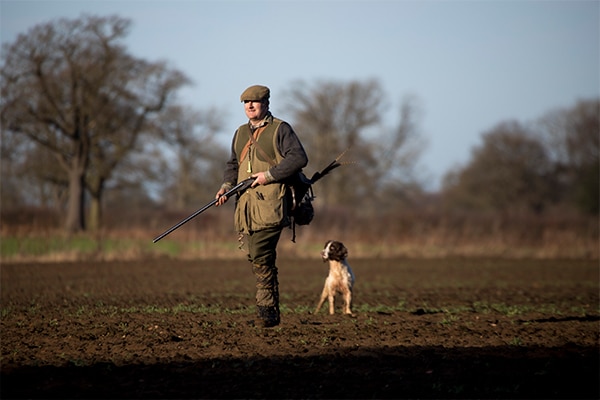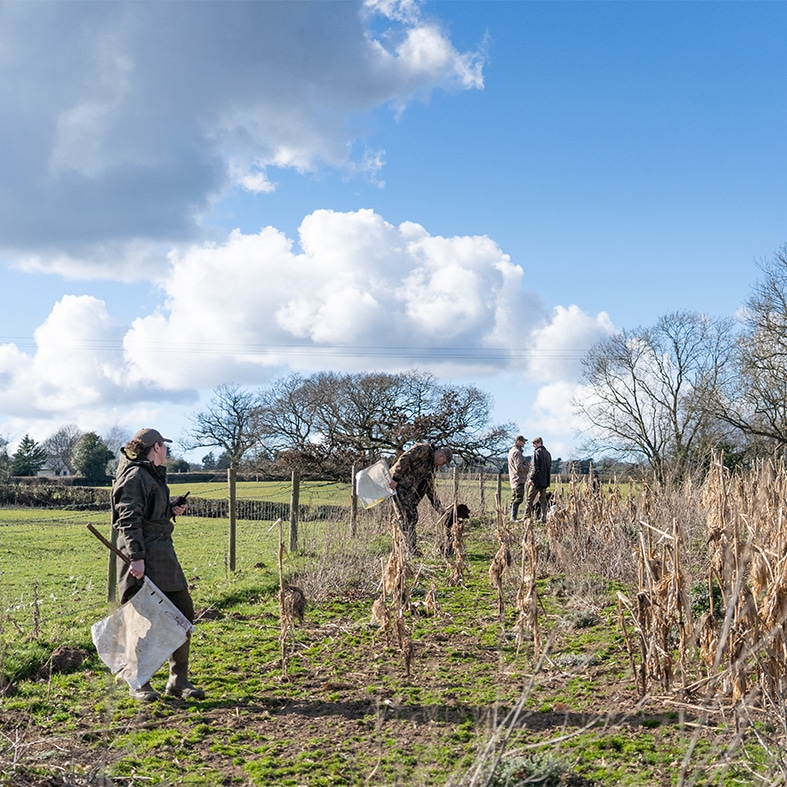
Game shooting advice
Find out everything you need to know below. Whether you are new to game shooting, or want more practical advice we’ve got you covered.
Get information on the legal shooting season for mammals and birds in the UK.
Apply for funding for your project or make a donation today
Comprehensive information and advice from our specialist firearms team.
Everything you need to know about shotgun, rifle and airgun ammunition.
Find our up-to-date information, advice and links to government resources.
Everything you need to know on firearms law and licensing.
All the latest news and advice on general licences and how they affect you.


Home » Game Shooting » Beating » Transport of beaters
One area of shoot management which does not always receive sufficient consideration is the transportation of shoot personnel; Guns, beaters, pickers-up, etc.
Though the provision of a dedicated vehicle is not always possible, temporary transport generally used for other purposes must meet HSE minimum standard guidelines and always be safe, secure and in a roadworthy condition.
Obviously, each shoot has a different set of circumstances but if you are providing transport for a shoot day, in particular trailers towed behind vehicles, then listed below are the key points which must be considered:
Health & Safety Executive (HSE) information sheet 36, “Carriage of passengers on farm trailers”, states that the minimum standards for trailers carrying workers to and from worksites on a one-off basis (in this instance ‘one-off’ is defined as a trailer usually used for other purposes) are;
Trailers dedicated/adapted for the sole purpose of transporting of shoot personnel should comply with the full regulations, which can be found in HSE information sheet 36.
A safe system of operation must be in place, the features of which should include:
The responsible person should ensure the number of passengers does not exceed the capacity of the trailer.
The “no smoking” legislation applies on trailers.
The following instructions should be given to passengers before they enter the trailer:
ATV quad bikes should not be used for transporting passengers.
For further advice and guidance contact the Agricultural Inspectorate at your local Heath & Safety Executive.
Under the Road Vehicles (Construction & Use) Regulations 1986, as amended, there are potential offences relating to carriage of passengers. Regulations 90 (1) states ‘no person shall use or cause or permit to be used on a road any trailer for the carriage of persons for hire or reward’. Provided there is no element of hire or reward relating to the carriage of passengers in or on a trailer on the public highway then no offence is committed under this regulation.
Under Regulations 100 (1) which states ‘a motor vehicle, every trailer drawn – hereby …the number of passengers carried by such a vehicle or trailer, the manner in which any passenger is carried in or on such vehicles or trailer… shall at all times be such, that no danger is caused or is likely to be caused to any person in or on the vehicle or trailer or on a road’.
Under this Regulation, whether or not an offence is committed is a question of fact and degree. Provided passengers are carried safely and in such a manner that they are in no danger and no danger is likely to be caused to them then no offence will be committed under this Regulation. However, as stated previously, it is a matter of interpretation and related to the specific facts of any case, whether or not passengers are being carried safely.
Provided the guidance offered above is followed, then this will go a long way to ensuring passenger safety and thereby ensuring no prosecution will be likely to result from the carriage of passengers in or on a trailer on a public highway.
A ‘public highway or place’ is defined by the police as anywhere the public can go that is maintained by the council, or where the general public can travel without any restriction, i.e., there are no gates or private property notices.
Anything outside of the above, including private land and property, is termed a ‘special place’. If accidents (resulting in injuries or death) happened here the drivers, event organisers, landowners, etc could be charged under the ‘Wanton & Furious Driving Act 1861’. This is still in force and has been used on a number of cases in the recent past.
It is sensible for any person intending to carry passengers in or on a trailer on a public highway, (in connection with a shoot) to contact local police for affirmation that the safety measures that have been adopted satisfy their requirements.
A trailer which does carry passengers must comply with Regulation 15 of “The Road Vehicles (Construction and Use) Regulations 1986 (C&U), if manufactured after 1 April 1983.
Regulation 15 of C&U brings in EC directive 98/12 paragraph 2.2.2.10.
2.2.2.10.
On every trailer which is required to be fitted with a service braking system, parking braking shall be ensured even when the trailer is separated from the towing vehicle. It shall be possible for a person standing on the ground to actuate the parking braking system; however, in the case of a trailer used for the carriage of passengers, it shall be possible to actuate this braking system from inside the trailer. The expression ‘actuate` also covers the action of releasing.
In short, if the trailer is not agricultural and is used to carry passengers, then it must have a parking brake which can be operated from inside the trailer.

Find out everything you need to know below. Whether you are new to game shooting, or want more practical advice we’ve got you covered.

It is your responsibility to know what you can and can’t shoot, and when, so make sure you bookmark this quarry season page.

Goose shooting is a traditional and highly-valued recreation sport and brings sustainable economic benefits to rural areas.